Cruise line companies have been riding around the waves of change for a while. From luxury cruises for European aristocrats, to waste streams polluting the water they navigate, to the sinking of the Costa Concordia, entire ships being quarantined due to COVID outbreaks, and the banning of cruise ships in central Venice. Yet publicly traded cruise line companies became meme stocks. One of the hotly followed cruise liner meme stocks was Carnival Corporation (CCL). But with vaccines widely available and country lockdowns over, it might be time for the cruise line industry to return to normal. So, has Carnival recovered from COVID?
The first large “cruise ship” was built in 1831 and sailed out of Naples in 1833, which was followed by years of luxury cruise liners, such as the Prinzessin Victoria Luise, which catered to the wealthiest Europeans. Eventually, cruise fees moderated allowing hoards of retirees and vacationers to travel the world in comfort. But the glimmer on the hull began to fade when the environmental impact of these floating cities surfaced. Sunken vessels on the headlines didn’t help. Neither did the protests in Venice. Or the COVID outbreak on the Diamond Princess with 712 confirmed cases and 14 deaths. Carnival Cruise Line, a cruise line of Carnival Corporation & plc, eventually paused voyages for a year. The drop in revenue during this pause was as expected.

Revenue sunk from a high of 6.5 billion in Q3 of 2019, to a low of 26 million in Q1 of 2021. For four quarters, from Q3 of 2020 to Q2 of 2021, revenue was barely noticeable. Revenue has been climbing again and has almost reached its previous levels.
Book Value has not shown the same resilience and the company doesn’t seem able to maintain low levels of debt relative to equity like it previously did.
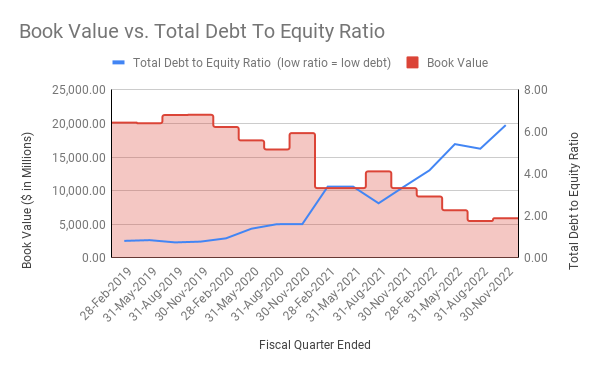
Book value (the value of the company) has not shown signs of recovery as it headed lower every quarter except in Q3 of 2021. This is further illustrated by Carnival’s debt-to-equity ratio which has risen quickly since the beginning of the pandemic.
Carnival’s cash flow is cause for concern.
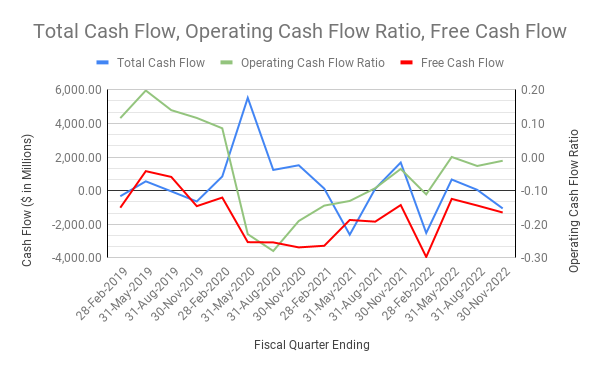
Total cash flow was not strong even before the pandemic. Total cash flow only showed a rise in Q2 of 2020, and that was mostly from issuing long-term debt. The operating-cash-flow ratio is slowly recovering, but free cash flow remains negative. Free cash flow is the cash a company generates after supporting its operations and maintaining its capital assets. In other words, the cash left over after the company pays its operating expenses and capital expenditures. Or, how much money is left after paying the costs to run the business. Free cash flow is often a sign of the company’s efficiency.
So how did the shocks of cruise line pauses affect Carnival’s stock price? Negatively, as expected.
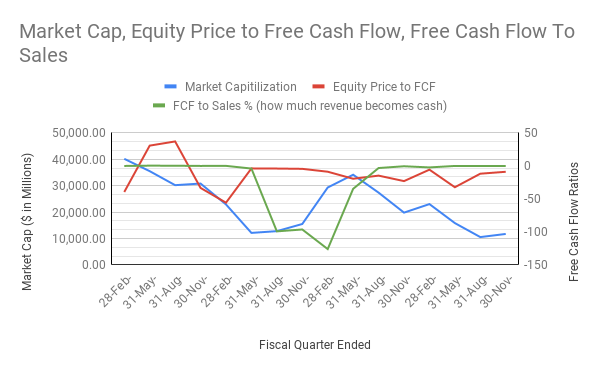
Free cash flow to sales, how much of the company’s revenues becomes cash, has recovered to previous levels. Apparently, the company has been focusing on getting its cash back to pre-pandemic levels and has succeeded. Yet when comparing Carnival’s stock price to Carnival’s free cash flow (Equity Price To Free Cash Flow), the end result is flat. Even with all the meme hype, market participants have kept the stock price in line with the company’s free cash flows, more so than before the pandemic. Some of the market’s most notable investors, such as Warren Buffett the CEO of Berkshire Hathaway, favor cash-flow-producing companies. During these times of stress, investors and traders seem to have locked in on Carnival’s free cash flow when determining how to value the company.
With the current trends in Carnival Corporation & plc’s financial statements, investors should proceed with extra caution. Management has done well at squeezing cash out after hard times. Higher debt levels might be expected considering what the company (and the world) has gone through, but Carnival will need to keep its debt from spiraling out of control (such as what happened with General Electric after the 2008 crisis).
Organisation for Economic Co-operation and Development (OECD) countries’ unemployment rates are low.
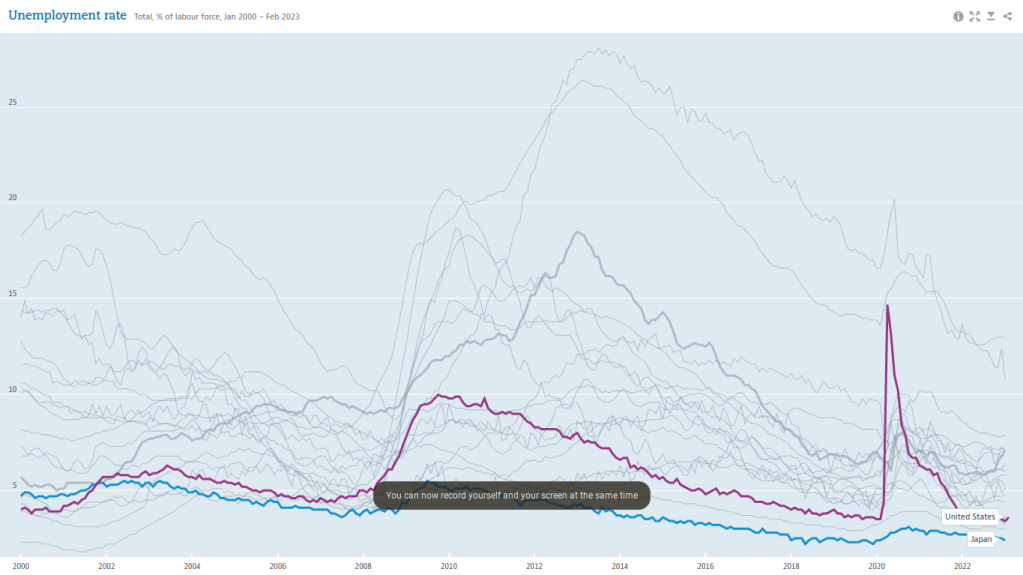
This bodes well for cruise companies since people will be more likely to spend money on non-essential items and services.
Inflation however remains stubbornly elevated. Staple foods, such as eggs, are much higher than at any time in the last 20 years.
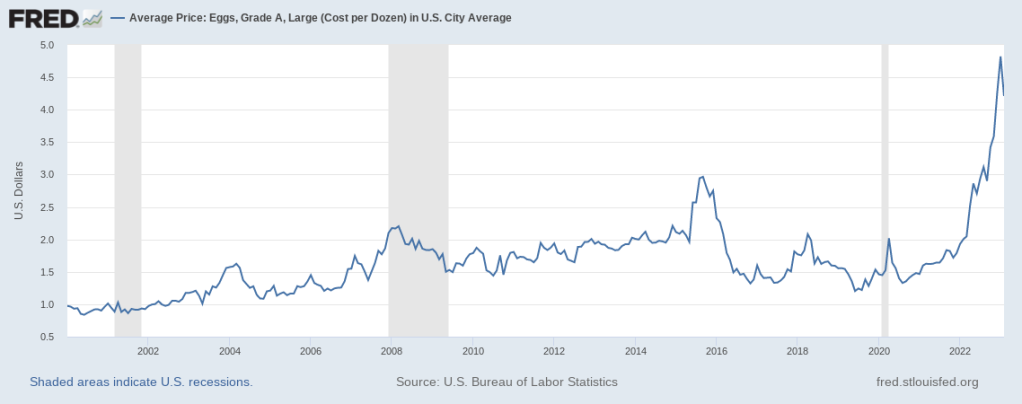
Oil prices are moderating:
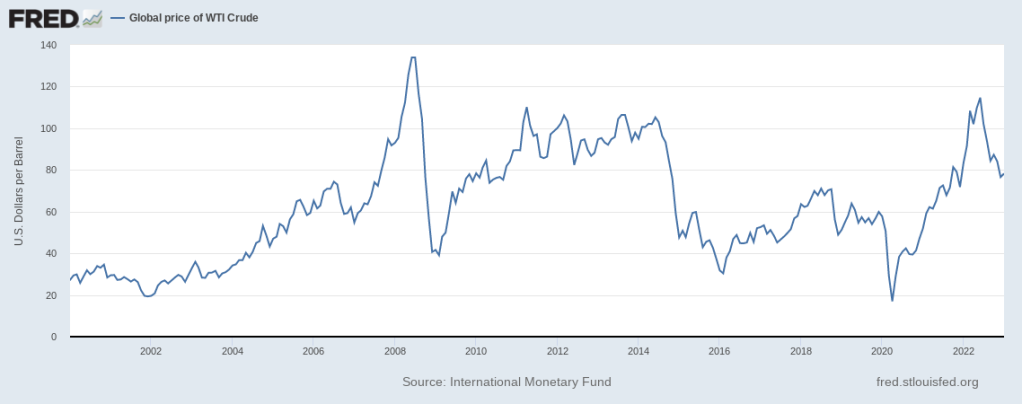
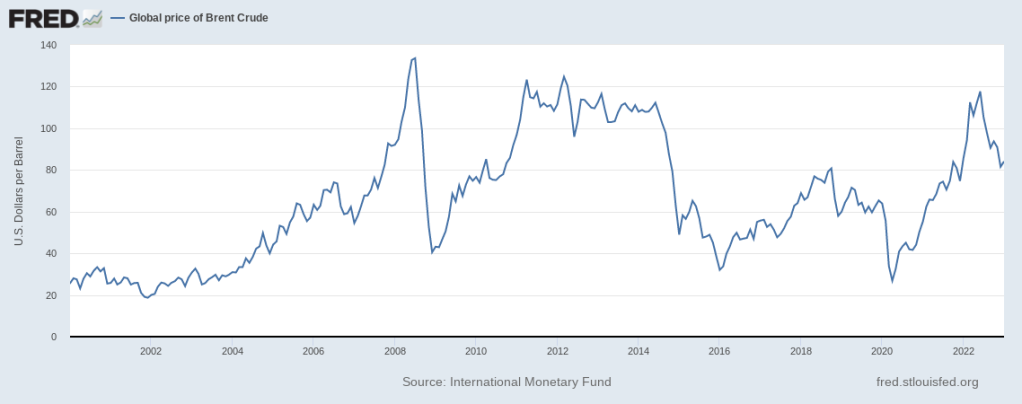
Yet in the United States and Europe, prices at the pump are painfully high.

With gas prices this high, consumers will have to shell out a large chunk of their paycheck towards the cost of traveling to work.
Consumers are not the only ones struggling with the cost of fuel. Heavy fuel oil (HFO), the fuel larger ships use, is near an all-time high.
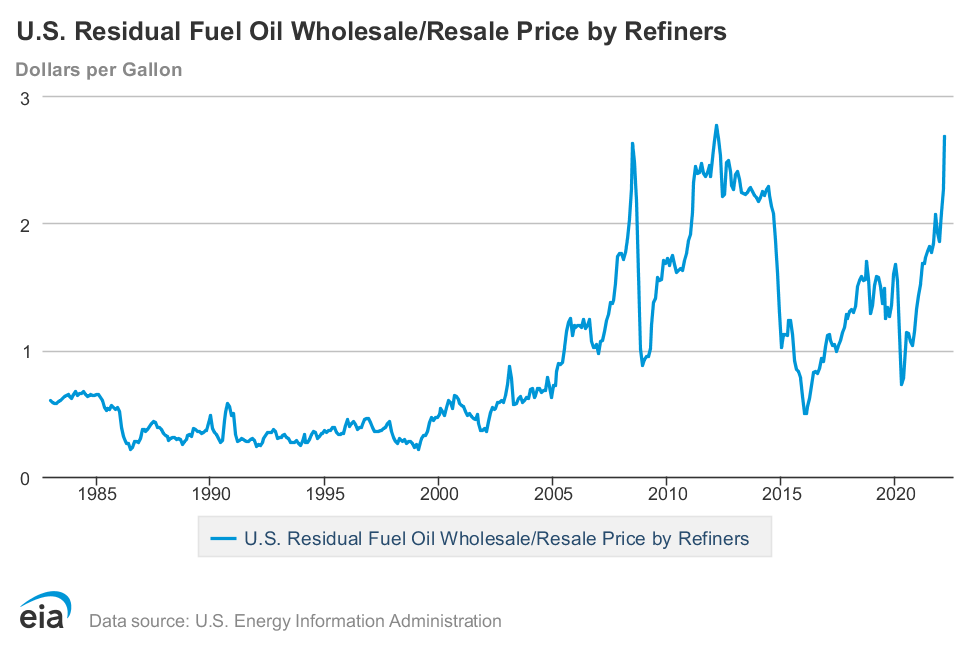
Cruise line companies will most likely have to pass the higher cost of operating on to customers. Higher prices for customers, in an already expensive environment, will mean fewer people will be able to afford this service.
The United States Federal Reserve is raising rates to tame inflation, which may lead to a hard landing. The European Central Bank continues to raise rates as well also in hopes of taming inflation.
(Hard Landing: when a central bank tightens monetary policy to fight inflation and causes a recession.)
Blinder, Alan S. 2023. “Landings, Soft and Hard: The Federal Reserve, 1965–2022.” Journal of Economic Perspectives, 37 (1): 101-20. DOI: 10.1257/jep.37.1.101.
If there is a recession, luxury cruise line companies will most likely struggle to find customers.
Overall, there are a lot of headwinds for Carnival and it is not clear how well it can weather the next few years. Even with a share price 50% lower than a year previous, and 85% cheaper than five years ago, Carnival shares don’t appear to be a catch. Management will need to navigate Carnival out of the high debt and low book value to resurface the company’s share price to pre-pandemic levels.
Here at Salty Analysis, CCL is currently rated as a sell.
[All information posted on this site is for informational purposes only. It is not intended to be investment advice.]
[ We may earn a commission from links on this page. We participate in select affiliate marketing programs, which means we may get paid commissions on editorially chosen products purchased through our links to retailer sites. ]